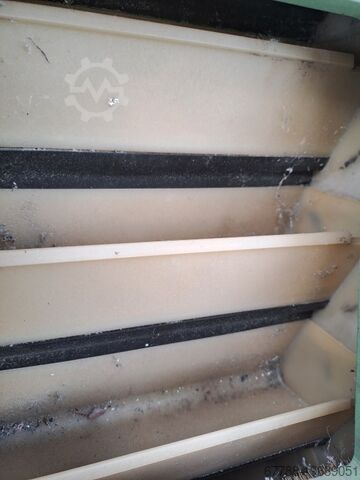Used crushing mills for sale (34)
 Rybnik
Rybnik Crushing mill
RS TeamTech Sp. z o.o.RS-8F
 Stary Sącz
Stary Sącz Mill for recycling plastics and waste
ALPINE AUGSBURGRO 63/50 kW
 Fevziçakmak
Fevziçakmak Hammer Mill
Mizar Makina Ltd. Sti.Hammer Mill

+49 201 857 86 180
 Bulgaria
Bulgaria Vertical chain shredder/Querstromzerspan
 Fevziçakmak
Fevziçakmak Cable recycling - cable crushing machine
MelikşahMLK 103-120
Discover more used machines
 Rybnik
Rybnik Two-shaft shredder
RS TeamTech Sp. z o.o.RS 1200F
 Fevziçakmak
Fevziçakmak Cable recycling - cable crushing machine
MelikşahMLK 101-60
 Żory
Żory Shredder for waste from a die cutter
RS TEAMTECH SP. Z O.O.RS-601
 Fevziçakmak
Fevziçakmak Cable Recycling Machine
Melikşah MakinaMLK 102-80
How can I spot good Crushing mills?
Recognizing a high-quality crushing mill involves checking several key factors. First, evaluate the overall condition of the machine, including any signs of wear or damage. Inspect for corrosion, especially in critical areas where the material is pulverized. Check for smooth operation of moving parts and listen for any unusual noises that could indicate internal issues.
Manufacturing Labels and Documentation
Always verify the presence of manufacturing labels and documentation. High-quality machines usually have clear labels indicating the manufacturer, model, and serial number. Documentation should include a user manual and maintenance history, which can provide insights into the care and upkeep the mill has received over its operational life.
Examine the Performance Specifications
It's important to assess the mill's performance capabilities. Check its capacity to process materials at the rate you require and review its efficiency ratings. If possible, observe the mill in operation or ask for recent performance data to ensure it meets your needs.
Consider the Age and Technology
The age of the machine can impact its functionality. Newer models might offer more advanced features, better efficiency, and compliance with current safety standards. However, older models might be suitable if they have been well-maintained and retrofit with modern components.
Assess Safety Features
Safety is paramount when operating heavy machinery. Review the safety features such as emergency stops, guards, and warning signs. Ensure they are in good working order to protect operators and maintenance personnel.
Lastly, consider consulting with a professional mechanic or an expert in crushing equipment before making a final decision. Their expertise could be invaluable in ensuring you select a crushing mill that fits your operational requirements and safety standards.
Recognizing a high-quality crushing mill involves checking several key factors. First, evaluate the overall condition of the machine, including any signs of wear or damage. Inspect for corrosion, especially in critical areas where the material is pulverized. Check for smooth operation of moving parts and listen for any unusual noises that could indicate internal issues.
Manufacturing Labels and Documentation
Always verify the presence of manufacturing labels and documentation. High-quality machines usually have clear labels indicating the manufacturer, model, and serial number. Documentation should include a user manual and maintenance history, which can provide insights into the care and upkeep the mill has received over its operational life.
Examine the Performance Specifications
It's important to assess the mill's performance capabilities. Check its capacity to process materials at the rate you require and review its efficiency ratings. If possible, observe the mill in operation or ask for recent performance data to ensure it meets your needs.
Consider the Age and Technology
The age of the machine can impact its functionality. Newer models might offer more advanced features, better efficiency, and compliance with current safety standards. However, older models might be suitable if they have been well-maintained and retrofit with modern components.
Assess Safety Features
Safety is paramount when operating heavy machinery. Review the safety features such as emergency stops, guards, and warning signs. Ensure they are in good working order to protect operators and maintenance personnel.
Lastly, consider consulting with a professional mechanic or an expert in crushing equipment before making a final decision. Their expertise could be invaluable in ensuring you select a crushing mill that fits your operational requirements and safety standards.
Used crushing mills (34)
Search Werktuigen now with more than 200,000 used machines:Browse through the most popular machine descriptions:

+49 201 857 86 180










































































